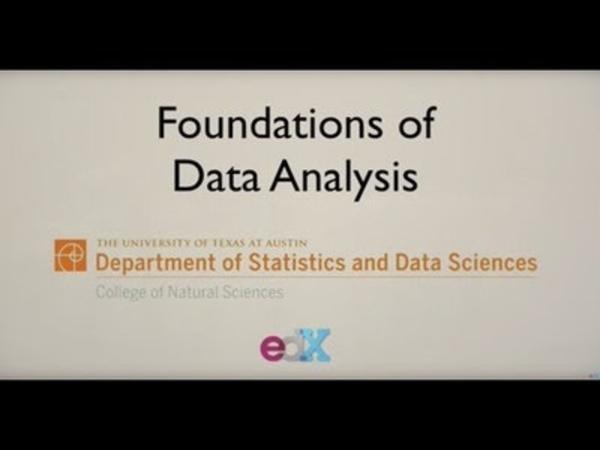Price:
1772 EUR
Contact
The University of Texas at Austin
Description
In this first part of a two part course, we’ll walk through the basics of statistical thinking – starting with an interesting question. Then, we’ll learn the correct statistical tool to help answer our question of interest – using R and hands-on Labs. Finally, we’ll learn how to interpret our findings and develop a meaningful conclusion.
This course will consist of:
Instructional videos for statistical concepts broken down into manageable topics
Guided questions to help your understanding of the topic
Weekly tutorial videos for using R Scaffolded learning with Pre-Labs (using R), followed by Labs where we will answer specific questions using real-world datasets
Weekly wrap-up questions challenging both topic and application knowledge
We will cover basic Descriptive Statistics – learning about visualizing and summarizing data, followed by a “Modeling” investigation where we’ll learn about linear, exponential, and logistic functions. We will learn how to interpret and use those functions with basic Pre-Calculus. These two “units” will set the learner up nicely for the second part of the course: Inferential Statistics with a multiple regression cap.
Both parts of the course are intended to cover the same material as a typical introductory undergraduate statistics course, with an added twist of modeling. This course is also intentionally devised to be sequential, with each new piece building on the previous topics. Once completed, students should feel comfortable using basic statistical techniques to answer their own questions about their own data, using a widely available statistical software package (R).
With these new skills, learners will leave the course with the ability to use basic statistical techniques to answer their own questions about their own data, using a widely available statistical software package (R). Learners from all walks of life can use this course to better understand their data, to make valuable informed decisions.
Join us in learning how to look at the world around us. What are the questions? How can we answer them? And what do those answers tell us about the world we live in?
Specific details
Category of Education
Computer Sciense and IT







 How to resolve AdBlock issue?
How to resolve AdBlock issue? 


Comments (0)